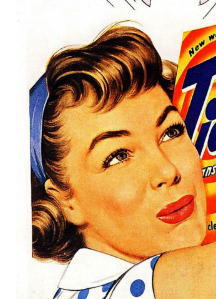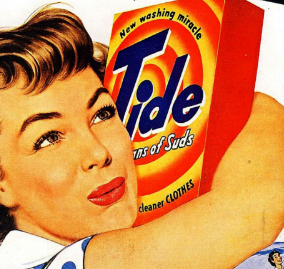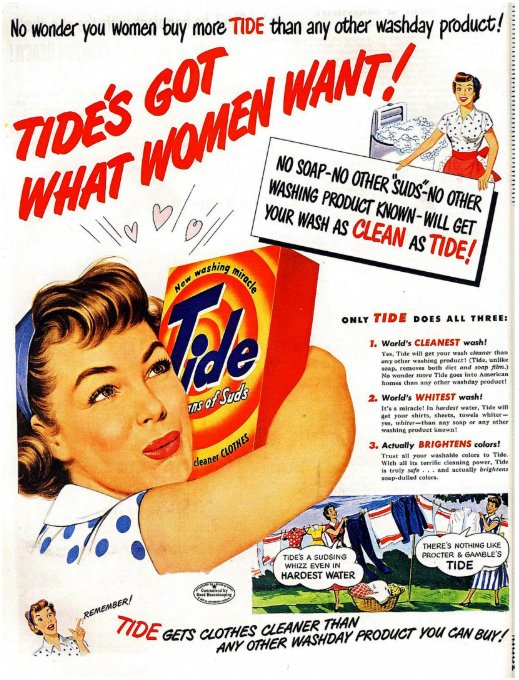Tide- Media language, representation, Audiences and industry
1/13
There's no tags or description
Looks like no tags are added yet.
Name | Mastery | Learn | Test | Matching | Spaced |
|---|
No study sessions yet.
14 Terms

Close up of womans face
-full face of makeup and perfect hair
-shows that appearance is very important for woman
-may be aspirational

woman hugging tide box
-smiling and hugging
-shows live for tide and the housework

Tide advert illustration
-its an illustration
-makes it easier to edit and change
-shows the perfect woman
-post war britton was sad

Barthes’ Semantic Code
applied to the use of hearts above the main image. The hearts and the woman’s gesture codes have connotations of love and relationships. It’s connoted that this is “what women want”
Media language in tide
-bright primary colours
-informal mode of address due to font
Structuralism – Claude Lévi-Strauss
“Tide gets clothes cleaner than any other washday product you can buy!” and “There’s nothing like Procter and Gamble’s Tide”, reinforces the conceptual binary opposition between Tide and its commercial rivals.
representations of woman in tide
women were the primary market for the technologies and products being developed for the home. In advertising for these types of texts, stereotypical representations of domestic perfection,
Stuart Hall’s theory of representation
the images of domesticity form part of the “shared conceptual road map” that give meaning to the “world” of the advert. Despite its comic strip visual construction, the scenario represented is familiar to the audience as a representation of their own lives.
David Gauntlett’s theory of identity
women represented in the advert act as role models of domestic perfection that the audience may want to construct their own sense of identity against.
bell hooks’ feminist theory
argues that lighter skinned women are considered more desirable and fit better into the western ideology of beauty, and the advert could be seen to reinforce this by only representing “modern”, white women.
target audience
increasingly affluent lower-middle class women appealed to because of their supposed need for innovative domestic technologies and products.
Social context
Despite women having seen their roles in society change during the War domestic products of the 1950s continued to be aimed at female audiences.
audience demographic
constructed through the advert’s use of women with whom they might personally identify These young women are likely to be newly married and with young families (clothing belonging to men and children on the washing line creates these connotations).
Reception theory – Stuart Hall
indirect mode of address made by the woman in the main image connotes that her relationship with the product is of prime importance